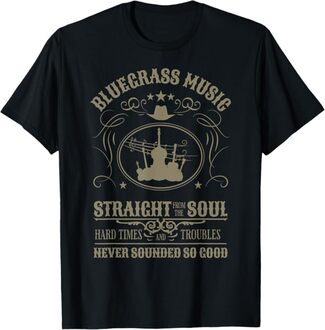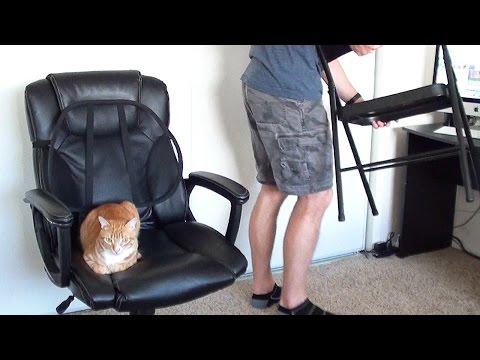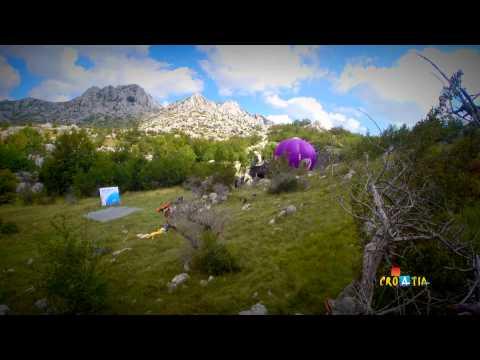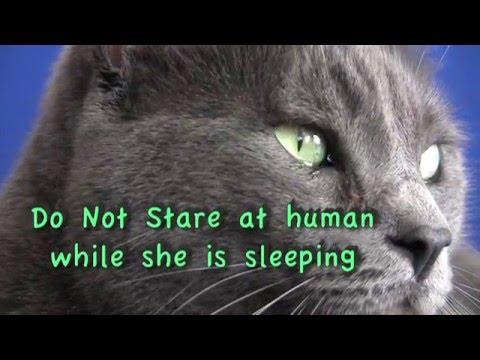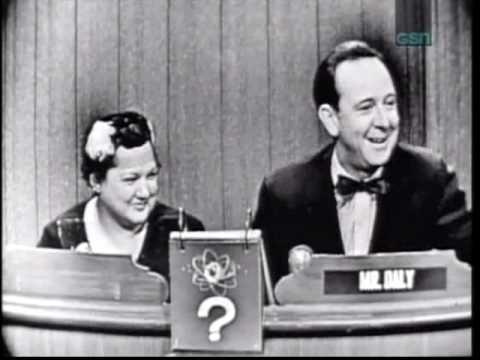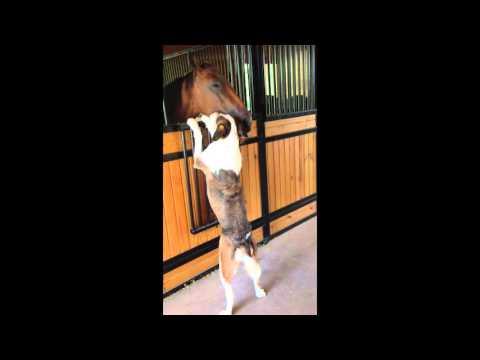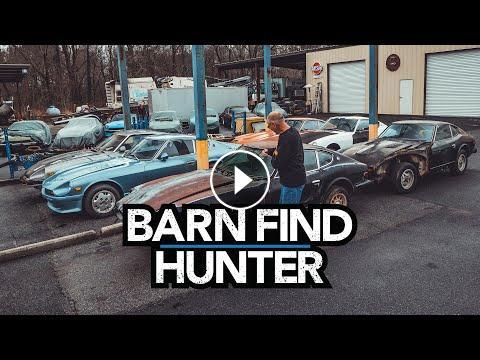In hopes of finding more youthful barn finds, Tom heads south to Atlanta, GA, to meet up with an old friend and co-inventor of the Hans Device, Jim Downing. Jim has been a staple of the Mazda racing scene since 1974, which naturally led to amassing more than a few interesting imports. Follow along as Tom walks you through Jim’s timeless collection of Mazda racecars and desirable streetcars. Tom then stumbles upon two young businessmen who live for Datsun Z-cars. Watch as Tom is blown away when he discovers they have a set of first-gen Datsun 240Zs.
Video Script::
(upbeat rock music) - [Tom] Hi, this is Clark Griswold, and I'm glad you could join me today in the family truckster
as we go around looking for the Wally World of hard to find cars. We're in Atlanta, Georgia. A market that I see is
one where we can find cars that are kind of young collector cars, not from the thirties
and forties and fifties, but maybe the seventies, the eighties. And so we're on our way to
Jim Downing's shop right now. Jim Downing is a renowned IMSA driver. And a guy that recognized the potential for a rotary powered race cars early on, and spent his whole career driving them. So we're on our way to his shop right now. We hear that he's got a few lying around. (upbeat rock music) How is the... This is 8:30 in the morning, yuck. (car door slams) Today we've been allowed to
come into what I consider kind of a little piece
of racing royalty here. This is a renowned race
shop owned by Jim Downing. Jim Downing being one of the
first drivers I would say, to have realized the
potential for a rotary powered race car in the early RS series. RX2s, RX3s, and RX7s, and
prototypes, and so forth. And win five championships in IMSA. And if that's not enough for a career, Jim is also the guy who I guess
co-invented the HANS device with his brother-in-law Bob Hubbard. This being an early one,
this being a late one. So thank you so much for getting up on this crud out morning. - Well you're welcome. Let's give Bob most of the
credit for the invention. - Really? - He likes to say I asked the question, he answered it and then I built 'em. And we ran the business
out of this building. - So all right, you know what, we're going off track
but I love this story. Tell us about how this came to be. - I was in a bad accident in '80. And then Patrick Jacquemart was killed in mid-Ohio of a basilar skull fracture. Bob likes to say I asked
how we prevent this. Being a biomechanical engineer
he came up with the idea and it evolved, and evolved,
and evolved, and evolved. Today then we have something like this, out of the very first
one which was like this. And now it's pretty universally used by everybody with any sense. (chuckles) - [Tom] Isn't that amazing? How many of these do you figure are outin the world right now? Do you have any idea? - [Jim] Uh, we think
there are around 250,000. - [Tom] Wow. Wow, wow, wow. Before the cameras were on, Jim told me that his
father had a dealership. Tell me about that, you and
Dad used to go out looking? - Yeah when I was, this was
the late 40s and early 50s. My dad would go out on Sunday
afternoons hunting old cars. I remember he'd bought a couple of 'cords out of backyards of
people he'd heard about. So I grew up around it and you know, (chuckles) I'm still doing it, so. - Wow. Isn't that something? So you know we think barn
hunting's a new concept. It ain't. (upbeat rock music) - I've always thought of this as being what a real sports car was. This is a '46. I was driving a '49 in high school. So this is I guess the
minimalist sports car. - [Jim] Yeah. Yeah there's not much to a Lotus 7. - [Tom] A Lotus 7 was built by a guy named Colin Chapman. It's kinda like a four wheel motorcycle. It's, what's it weigh? - Uh probably 11 hundred pounds? - 11 hundred--
- Um yeah I think. - [Jim] This is a '67 Cosmo. It has the first rotary engine, and was never sold in this
country by the factory. And it's just amazing that a Japanese car in the mid-'60s looks like this, you know?
- This is not restored? - No it, no this is a, this was a street car and... - That's a metal body? - [Jim] Yeah. - So '67, so this was well before Mazda made an entry in the United States. - [Jim] Yeah they didn't
come in until '69. - A deux-chevaux. So this was a car built
in France by Citron, that when it was designed, it had to have the ability to drive across a freshly plowed farm field with a basket of eggs on the front seat, and without breaking an egg. So that's how compliant
the suspension is on this. - [Jim] And maybe with
a goat in the backside. (laughs) - Yeah, really. So I'm looking, is that a sign
from Road Atlanta or replica? - That is the original
sign from Road Atlanta. Larry West who we think did the original sign of Road Atlanta came over, and went over it so that
it's exactly like it was. - [Tom] Did you race in it? - Yes I did. - [Tom] Wow. I could spend an hour look, just looking at the walls. (upbeat rock music) - [Jim] This was done by
a doctor up in Milwaukee. It's the same thing. This is a '95, a three
rotor imported from Japan, was put in this and it
has about 450 horsepower. Spin the wheels at 60
miles and hour. (laughs) - Dang. - [Jim] This is the show car. - [Tom] Aha, okay. - [Jim] That's not a real car. They built three cars that
were supposed to race. Well the third car was
never really finished. That's it there. (Tom laughs) - Wow.
- We're restoring it, - and building the parts
that weren't quite finished. - That's a four rotor car. - Yeah. - And naturally aspirated I guess right? - Yup. - [Tom] So these are
what you cut your teeth in the rotary world with I guess, right? - [Jim] Yes this is a '78 RX3 that ran in the Champion Spark Plug series in IMSA, and won the championship in '81 with it. But the famous car is that one, that's the very first Mazda factory effort in this country. '78. 24 hours at Daytona. I got this back about 12 years ago, and started restoring it. - [Tom] So right-hand drive. Did you build it here right-hand drive? - [Jim] No this is how it comes factory. - [Tom] So it was already
built as a race car. - Yeah.
- Wow. - [Tom] So this is one
that was never finished? - [Jim] Some parts missing and, but you know who the
original suppliers were. We have all the original
drawings from Dykstra, so it's being finished the
way Dykstra designed it. But this, this will be a high-end car. 'Cause you know it's just gorgeous. This is the prettiest
thing I've ever seen. - [Tom] This is the motor right here. This is a four rotor engine. And this, it has, it's fuel-injected but naturally
aspirating I guess right? - [Jim] Yeah. (upbeat rock music) This is a '78, this was the fancy one that had all the stripes and everything. We've been sorta gradually restoring it. Quicker car, and specialty parts to it. It's hard to find now. - [Tom] That's a neat car. When they developed a car like this, RX2, RX3, they were the
size of a Datsun 510. The size of a Pinto, the size of a Toyota Corolla. They got a bad name for themselves, because the gas mileage was not as good as those other cars I just named. But really these cars were
like V8 powered weren't they? - Right and that, I mean no gas mileage. This was a hot rod. I mean you get power for
using some gas you know? (laughs) If you look at it as an economy car, get a Nissan you know? That's not the point. The barn find that, that originally sparked
all this is that car. - [Tom] This car. - [Jim] That's the
Inter-American Challenge car that was in the Miami street races in '86. They ran that as a Mazda you know support, it was a support celebrity event. - [Tom] Okay so there was a number of cars identically prepared type thing? - [Jim] There were 16 in that year. - [Tom] Really? - [Jim] They ran, they ran that program for at least three years I know of. '84, '85 and '86. I got to be one of the drivers in '86. Although I have no idea
what car that was in. This showed up on eBay, about 12 or 14 years ago. And I bought it. (Tom laughs) And we've sorta gradually collecting pieces and stuff to put it back together. It's got the original roll cage, and it had the big Mazda stickers on it. - [Tom] So that's a second generation RX7. This is exactly what I was
hoping to find on this trip, were cars like this. Huh. So another deux-chevaux. Is this a parts car or
is this another project? - [Jim] It's a project car. It's an '84, it's quite a late one. - [Tom] So you can see
it's got a two cylinder. Horizontally opposed. One cylinder here and one
cylinder on the other side. It's got disc brakes which is kind of, well I meant the disc brakes are inboard. Transmission, engine's
hanging out the front. If you go to your, go to France you see these
every day all over the place. You look at these shelves here. I think these shelves could, could be a museum in themselves, but those are molds for race car bodies, for the cars that he used to race in IMSA. The Kudzus and GTO cars. So another second generation RX7. This was kind of the bulbous one. If you remember the early RX7, first generation was a
nice tight little car that I think sold for
59.95 starting point. This was the second generation, it got a little bit fat. The third gen which was the twin rotor car like we saw inside, ha, were svelte. Lightweight and purpose built. Fast and handled great. And not an ounce of, it was all muscle. Not an ounce of fat on it. That's an ITA car. That was not one of your cars I think. - [Jim] No that belonged to Chuck Elinski, who was a Mazda racer, in the RX3, and RX2 days. You know there's some
sentimental value to us, and we, there's a group
of Mazda people in the US that really, really follow
rotaries and so we get something that has a little history to it we buy it. - [Tom] Are these parked cars, are they future project
cars in the back here? - Yeah they're parts cars or, but either one. - Yeah I understand.
- You know it just depends. - You see, if you find one, and it's reasonably priced you snap it up? - Yeah. - Well Jim thanks for inviting us to your little piece
of rotary utopia here. Thanks, it was a blast.
- Well thanks for coming. - It was fun. (upbeat rock music) - [Tom] Rain has let up thankfully. We're hope, hopefully
it won't even come back. We're north of Atlanta and we're driving to see some Datsun Z cars. So come along for the ride. (upbeat rock music) I haven't seen this many in
one spot for a long time. (upbeat rock music) Our plan to come to Atlanta and see kind of newer classic cars, and meet younger enthusiasts. Younger car collectors and restorers. That has led us to meet Max and Clay who have a business called
Resurrected Classics, and they specialize in the
restoration of Datsun Z cars. Now these guys are college students, and they cut out of class
today to meet us here, so you guys are the future. Like, you know like... I'm gonna fart away some day, and you guys are the future. So tell us what do you do here? How long you been in business? - So we've been doing this
probably since about 2017. We started with just one car. He's my roommate actually, I talked him into going
in on some cars with me. 'Cause I was a car guy you know, I was trying to get him
to be a car guy too. And so we start with one car that we paid $400 for. - A Z car. - Yeah. It was a Z car, it was a '74 260Z. Brought it back, you know fixed it up, and sold it. - For how much? - Uh 3,000. - Okay. - So yeah. So we thought it was pretty good, you know and we were pretty young, so there's not very many
good jobs when you're young, you know, that make good pay
so that was pretty good for us. We just kinda started from there, you know, in a barn. - [Tom] So now how many
Datsuns do you have now? - [Clay] I think we have
about 20 in inventory, then about 20 in parts, part cars. - [Tom] Wow, and it's like, all Zs from the earliest 240s to, to 280 to go beyond that? - Yeah we mainly specialize in '70 to '78. We do have a couple ZX,
like this is an '81. - Yep. - But the deadline you know, totally is about '83. - So do you have, do you have anything like the first gen 240, you know 1969-'70, anything like that? - [Max] Yeah we've actually got um, it's probably the most rare we have but, we have a '70 Datsun
that's VIN number 598. - So the 598th Z car built. Now there are collectors
now that are looking for early edition 240Zs. - [Max] Yeah that's kinda
what we were looking for also. - [Tom] Uh-huh. So did you guys pick these up? One Z, two Z, or did you
buy a collection or what? - [Max] I was actually
on like a Datsun forum, and I saw somebody. He said hey I have a couple Datsuns, you know and I've got number 598. You know and I was like wow, you know so I immediately called him up, and I told him I was like, man we need to get down there, you know 'cause something
- Now where was it? - that's not gonna last long.
- Where was it? - [Max] That was in Macon, Georgia. - [Clay] About an hour away
from where we go to school, so we got right in the
car and headed down there. Checked it out. - So is it a pretty solid car? - Yeah it's not bad. It's had one repaint. You can tell it's got a clear coat. - So is it, if I'm not mistaken, I used to have a '71. The early, the first
editions had 240 here. And instead of having the vents here, it has 'em back here. - Yeah, yeah. So like if you look at this
one right here on your left, so that's circular. And then they changed that but also, for cars that are much earlier, like it gets really specific, really nitty gritty but
like this Z is this silver, whereas like a normal '70, it'll look like that
but it'll be like white, and that's like a, they call like a '69 specific thing.
- Oh yeah. - But this is, and it's close to a '69. It's like a one of 70, so we just barely didn't make it, but. - And if you notice, the rear hatch glass has no defrost. - [Tom] Right and some had vertical, and some had horizontal
if I'm not mistaken. - Yeah exactly.
- On the first ones. - [Tom] There's no defroster back here. I guess in Japan they didn't need it, and the United States they
didn't require it yet. If you look at this ID tag up here, HLS30 00598 so that's the 598th Datsun Z car built. So it still has drive train in there, engine, transmission? - Yeah, yeah it's super original. - [Tom] Oh yeah. - [Max] And it's not in too bad of shape. It's got all the hard to find parts that you'd wanna have like the, the air filter doesn't have a, they have like a little flapper. Summer winter flapper. The valve cover says 2400 cc, when they would normally
- Oh yeah. - [Max] just say Nissan OHC. It's small stuff like that, but it means a lot to a collector. - So how many miles are
on something like this? Probably a lot. - Oh yeah.
- Well over a hundred. - [Max] Yeah probably something like that. Yeah. You can see. Yep. And if you notice the floors, they have like a, kinda
like an undercoating. - Oh yeah. - They didn't put carpet. That was what they did, so these are really early.
- They didn't carpet the cars? - [Max] No not yet. - [Tom] They had rubber mats? - [Max] Yeah 'cause when
they were making these cars, they weren't sure, they
were kinda tweaking things, like the defrosters. They didn't know if
they needed that or not, so they made a lot of changes. That's a '69 specific part. - So it looks like 83,000 miles. Could that be 83 or it could be 183? - Um you know I think it'd be 83,000. That could be a stretch but
183 seems like a lot to me. You know.
- It does, yeah. - And this car isn't
really that bad a shape. I mean the back... You know this area rusts out a lot. - [Tom] So this is destined
for a full restoration? - Oh yeah. Yeah this one is, we've only had this car
for about a year or so, so we haven't had it very long. - [Tom] So that's all
original paint back here? - Yeah, yeah.
- Wow. - [Max] And you can tell
they didn't even put undercoating yet. So there's a lot of small
changes in these cars. - [Tom] I wonder why this is collapsed down there like that. - [Max] That's kinda how they're designed. There's supposed to be a cardboard insert that goes over that. - [Tom] Oh I see. - [Max] Yeah 'cause if you
look at the spot welds, it goes to like the,
- Yep. - [Max] down with the wheel well. - What would something like this, in restored condition be worth? - I mean if it was really, you know meticulously restored, I would think anywhere from 50 to 60,000. - No kidding. - You know and it's hard to
kinda get a good price for it, 'cause there's just not very many. I mean for what they call series ones, like '70s or early '71, or late '71s with the hatch vents, probably like 10,000. - So this is January '70
so they were just back from Christmas vacation. They built this car. Yeah I get it. So could we just unwrap some of these cars and see what you got here? Fairlady, so that was a non-import car? - [Max] Yeah. - [Tom] So in Japan these
were called Fairladys. Interesting. What year is this? - [Clay] It's a '77. - [Tom] So it's a 280? - [Clay] Yeah. - [Max] Yeah it's a 280Z. So these are factory bumpers, 'cause in Japan they
didn't have to change, so you could see Fairlady Zs would have, you know what we would call 240 bumpers but that was you know factory for them so. - [Tom] Got it. Oh that's pretty cool. So that's another restoration project. Now you're restoring these for yourselves. You're restoring them for sale. How does that work? - [Max] A little bit of both. You know there's some that
we want to do ourselves. We know we can't get to all of 'em. - [Tom] Alright so what else you got here? - [Max] It's a roller so
it's got no drive train. - [Tom] Yeah. - [Max] But it's in pretty solid shape. - [Tom] So is that the
price you're asking, or the price you bought it for? - Oh that's the price, little more than the
price I bought it for. - A little more.
- So. - Yeah. - Yeah I got pretty fortunate, but this is a car that, really solid example and we're gonna do an LS swap with this one. - Oh!
- Yeah. - Jeez.
- Yeah. - [Max] Yeah we decided,
we done a lot of factory stuff off original stuff. We wanted to do one that's, you know fast and fun. - Now do you have to do anything with the, with kinda the body to reinforce it for that kind of torque or anything? - Uh it's pretty, it's
pretty solid down there. - [Max] Yeah, there's probably some things that we'll add to it but overall, it doesn't take you know
too much modification. - [Tom] That's such a big area. You could put one in there--
- Yeah exactly. - [Tom] Man. - This is a project that we're um, probably gonna sell. So. - [Tom] Sell the way it is? - Yeah. It is somewhat rough but
it's really original. And it's getting harder
and harder to find 240Zs. It just really is. - [Tom] Used to be when
I was driving my car, you couldn't get a steel
quarter panel repair kit, but you can now I guess? - [Max] Yeah well, you
can't get an entire quarter. They don't make those anymore, but we can get is like a wheel well kit. [Tom] Yeah, yeah, yeah. - [Max] And it goes from about right here, to there, down to that dog leg. And that's really probably all you'd need. - Well yeah I had to put a
fiberglass fender repair kit in. No matter how good you do it, there's always a crack that starts. - [Max] Yeah, especially with
fiberglass to metal I think. It's difficult. - [Tom] Alright what else we got here? - [Max] This is a '78 280Z that we bought. It's almost a one owner car. - [Tom] Wow. - [Max] It was owned by
an old lady in Alabama. And it's been garaged a lot of its life. You can tell that because I mean, it's a southeastern
car and it's not rusty, so there's no way it can be outside. - So if you remember the
280Z we saw over there, the orange car with a little bumper. That's a Japanese bumper, and here's the US mandated five mile an hour bumper on a US 280Z. - [Clay] Right. It's got the, a stripe kit on there. Is this low mileage? - [Max] 99,000. - 99,000.
- And I believe - [Max] that's original miles. - [Tom] Wow that's quite a lineup here. And last but not least what is this? - [Clay] This is a 1970. - [Tom] Another '70? - Yeah.
- Yeah. - [Tom] Are you kidding
me, you have two '70s? - We've got two or three I think. There's one more in there, one in there, and one out back, or maybe not, there's like four. We'll have to add it up again. - So as I remember that was the first year they were available in the States. - Yeah that's true. - Okay so I can see that
the emblem was here. It's got the vents in the back. And so what's, what do you
do with something like this? - [Max] Well our first plan
is to get rid of the sun roof. 'Cause that was popular back in the day, but it's just not any more so that'd be, probably the hardest task. And then just rust repair. - [Tom] Do you have parts cars you can cut the roof off
and put a new one in? - [Max] Yeah. - [Tom] So if somebody watches this show, and hey I'd like to buy that
project car or whatever, you're open to that. - [Max] Yeah. Yeah, basically anything is for sale. - [Tom] That's a salesman. - [Max] We have some of our parts, like our more kind of precious parts what we'll store in here. Like we've got early, you know, sensitive parts.
- So those are the early - D hubcaps like a '70?
- Yeah. - Oh no kidding.
- Yeah. - So we got--
- Those things were rare - 30 years ago. - Really? Yeah I didn't know that. So we got about two stacks of 'em. These are, these are like '69 hubcaps. You can tell by the teeth. You see there's only a couple teeth, and look you know. - Oh yeah. - That's like early, early. Yeah a lot of people would
just throw the hubcaps away. - I know. - You know that's why they're rare today. - So is this a customer car, your car? - Yeah it's a customer car we're working on.
- Customer's. - So you're doing a
restoration on a customer car? - Yeah, yeah. We did the floor pans and
now we're doing the paint, then we're gonna put the engine in and get it running and driving. - It's an orange car? - Yeah it's like an or, it's like a persimmon color.
- Orange. - You know.
- Yeah, yeah, yeah. - And do you have just about every part? Oh look at that, wow. Bumpers, doors. So some of these transmission, like you know, this is the place to come. - [Max] Yeah you've got four speeds. Some five speeds. A few automatics. Some of the earlier transmissions, like '70s had different transmissions. They had like a straight shifter. Plenty of special--
- Do you petticoat these? - Yeah. We have a place that we use. This engine just kinda got like
a little refresh, resealed. Not any machine work. But just, yeah the
customer wanted just to, you know make sure there's no like leaks, like that remain seal you know front, timing cover seal, all
the stuff like that. - Well it sure looks pretty, wow. - Yeah it's kinda dusty now, but everything's all you know, ceramic coated on the hot stuff. - [Tom] Well somehow I have a feeling, Clay and Max, we haven't
seen the last of 'em. And I think you know, you're going to be able to see online, these guys probably, once graduation happens
from college in May, you can start seeing these guys popping up now and then about reproducing parts, restoring cars, bringing cars to shows. Magazine stories, whatever. So man thanks. Thanks for coming out
of school early today. - Yeah. - Appreciate it. - Just tell your teacher to give me, you know, give me a shout. I'll write you a note. It's a wrap. (engine starts, roars) Genuinely a refreshing stop. The task of coming down to this area was to find cars that would
appeal to youthful enthusiasts. And what we did was
find cars that appealed to youthful enthusiasts, and a business that's run
by youthful enthusiasts. I mean like, it's perfect. This is, this is where our hobby's going, is to younger enthusiasts
who are gonna take it, carry it forward, and it's not gonna be
working on 1939 Fords. It's gonna be working on 240Z Datsuns. So really encouraging to see what Max and Clay are doing there, and I think we're gonna see them in the future doing great things.
- Category
- Automotive
- Tags
- Hagerty, Classic Car, Classic Cars, Hagerty Drivers Club

